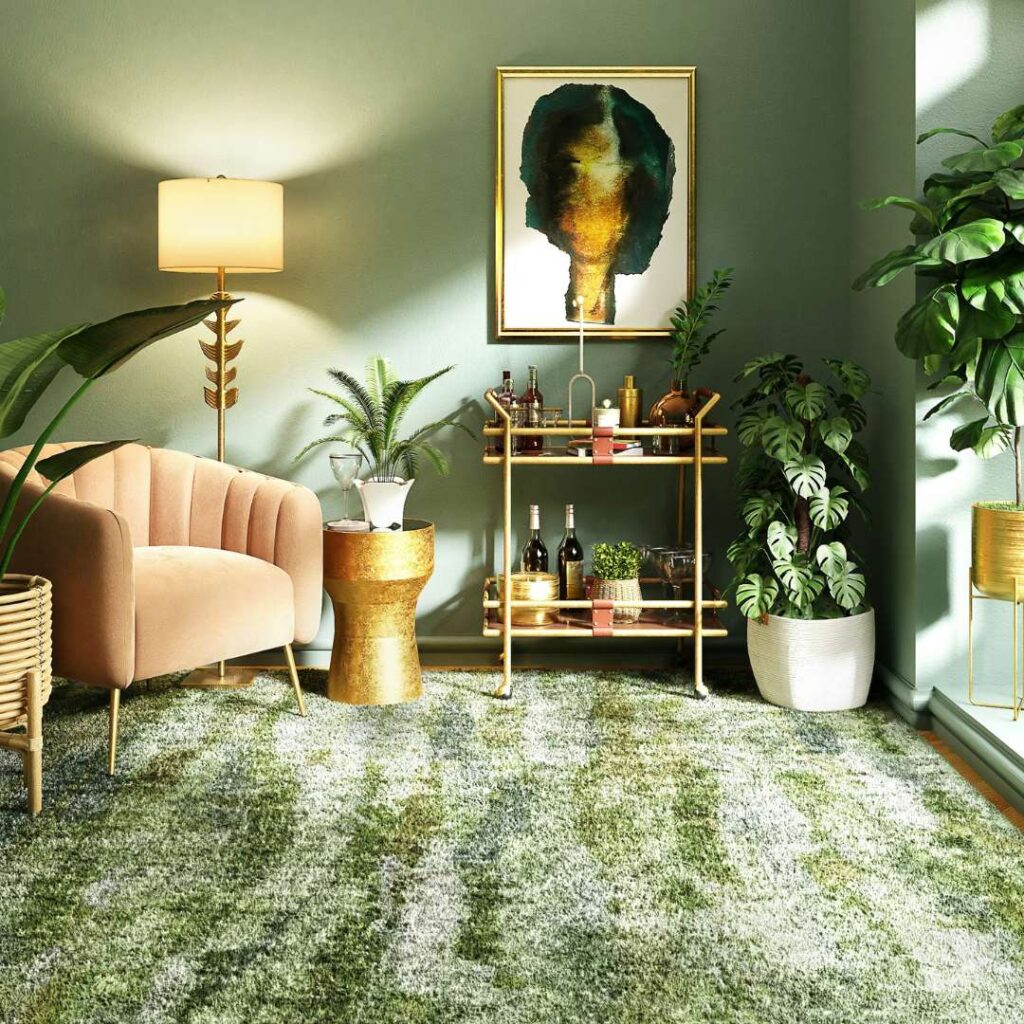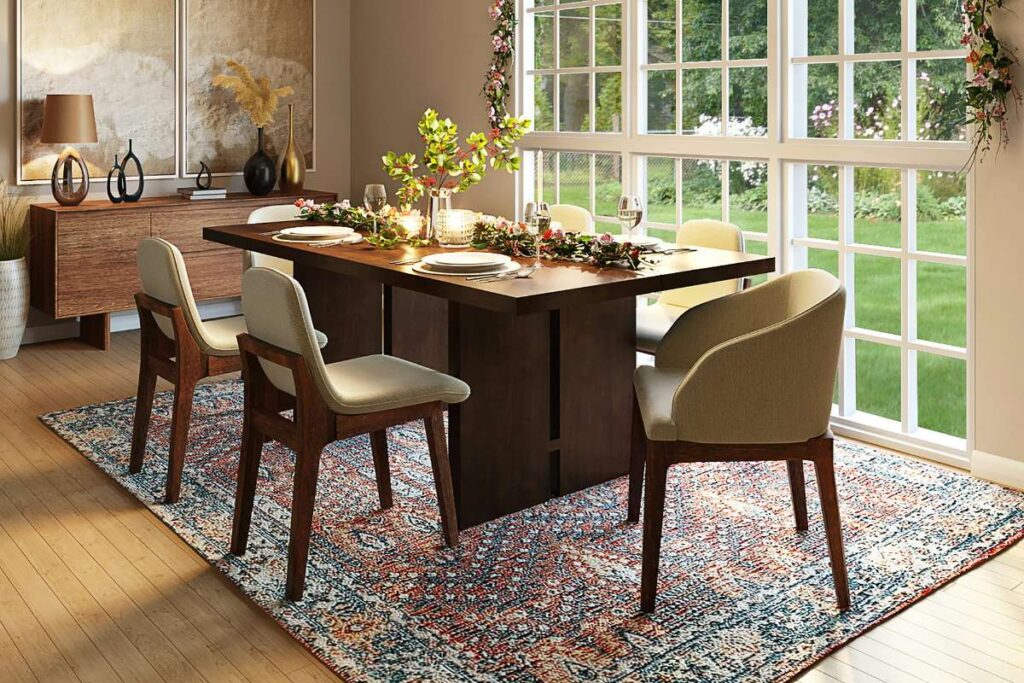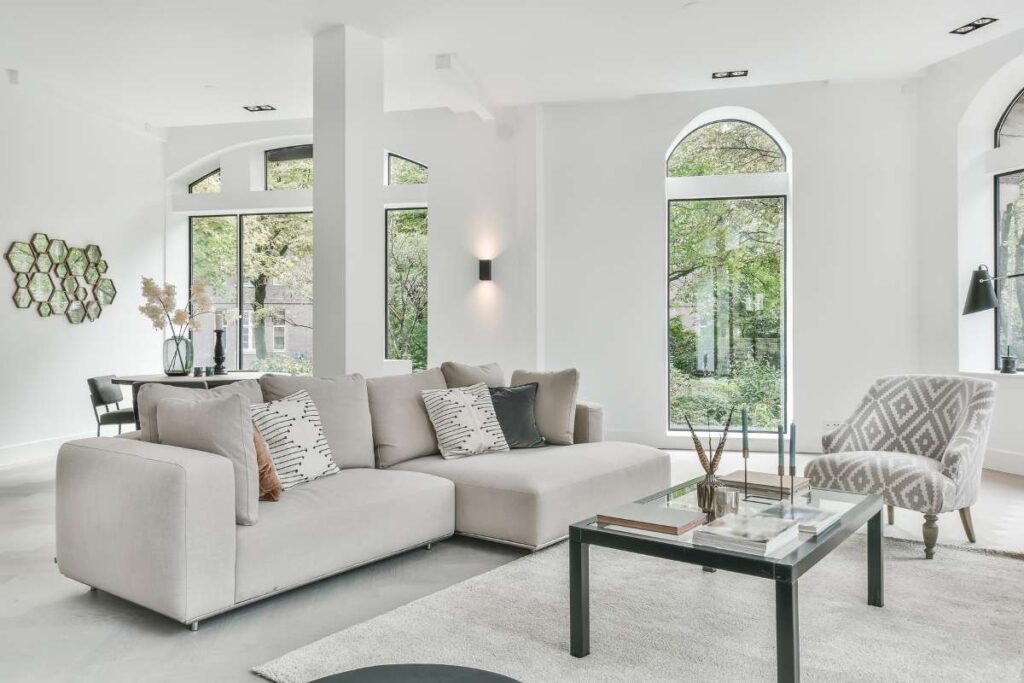In the realm of interior design, the importance of how to choose a rug color correctly cannot be overstated. Beyond mere decoration, rug color plays a pivotal role in setting the mood, defining the aesthetic, and unifying the space. In this comprehensive guide, we’ll delve deeper into the art of selecting the perfect rug color for various areas of your living space, ensuring that every room displays style and personality.
Understanding Color Theory For Rug Selection
When figuring out how to choose the a rug color, it’s important to have a basic understanding of color theory. Colors can be divided into three primary categories: warm, cool, and neutral. Warm colors such as red, orange, and yellow evoke a sense of energy and excitement, while cool colors like blue, green, and purple create a calm and soothing ambiance. Neutral colors such as beige, gray, and brown provide a versatile backdrop that can complement any sense of style or decor.
When deciding how to choose a rug color, consider the mood you want to create in the room. For a vibrant and energetic space, opt for warm, bold, and solid colors. If you prefer a more tranquil and relaxing environment, muted and cool tones would be a better choice. Additionally, take into account the color scheme of your existing furniture and decor to ensure a harmonious and cohesive look.

Factors To Consider When Choosing A Rug Color
There are several factors to consider when choosing a rug color for your space. Firstly, consider the size of the room. Light-colored rugs tend to make a space appear larger and more open, while darker colors can create a cozy and intimate atmosphere in larger rooms. Secondly, take into account the amount of natural light the room receives. Natural light can affect how colors appear, so it’s important to choose a rug color that complements the lighting conditions of the room.
Another factor to consider is the function of the room. For high-traffic areas such as entryways or living rooms, it’s best to choose rug colors that can hide dirt and stains. Darker shades or geometric patterns can be more forgiving in these areas. On the other hand, in rooms where you want to create a focal point or make a bold statement, opting for vibrant and eye-catching rug colors can be a great choice.
Tips For How To Choose A Rug Color For Different Spaces
Different spaces in your home have different functions and aesthetics, and the rug color you choose should reflect that. Here are some tips for choosing the perfect color for different spaces:
Living Room
The living room is often the heart of the home, and the rug color you choose can significantly impact the overall ambiance. If you have neutral-colored furniture and decor, consider adding a pop of color with a vibrant rug. Alternatively, if your furniture and wall colors are already bright, opt for a neutral rug color to create balance and harmony.

Bedroom
In the bedroom, you want to create a calm and relaxing atmosphere. Stick to cool and muted colors such as blues, grays, or pastel shades. These complementary color schemes promote a sense of tranquility and can help create a peaceful environment for a good night’s sleep.

Dining Room
The dining room is a space where you can get creative with rug colors. Consider choosing a rug color that complements your dining table and chairs while also adding visual interest to the room. Bold patterns or rich colors can make a statement and create a dynamic and inviting space for entertaining guests.

Home Office
In a home office, it’s important to choose a rug color that promotes focus and productivity. Opt for neutral tones such as beige or gray to create a clean and organized look. These colors can help create a professional and distraction-free environment.

How To Choose A Rug Color For Different Design Styles
Different design elements call for different rug colors to achieve the desired aesthetic appeal. Here are some rug color options for different room styles:
Modern/Contemporary
In modern style or contemporary rooms, neutral rug colors such as white, gray, or black can create a sleek and minimalist look. These colors provide a clean backdrop for the modern furniture and decor typically found in these spaces.
Traditional
For traditional rooms, consider rug colors that reflect a timeless and classic aesthetic. Deep reds, rich browns, and earthy tones can create a warm and inviting atmosphere that complements traditional furniture style and decor.
Bohemian
In bohemian-style rooms, embrace eclectic and vibrant colors. Mix and match patterns and colors to create a lively and free-spirited look. Don’t be afraid to experiment with unconventional and bold color combinations.
Scandinavian
Scandinavian-style rooms often feature light and airy interiors. Opt for lighter shade rugs such as whites, pastels, or light grays to create a clean and minimalist look. These bright colors enhance the open feel of Scandinavian design.
Rug Color Mistakes To Avoid
When determining how to choose a rug color for your space, the process can can be very exciting. However, there are some common mistakes to avoid. Here are a few rug color mistakes to watch out for:
1. Relying Solely On Trends
One common mistake that people make is relying solely on trends. It is important to note that trends can be helpful in guiding decisions, but they should not be the sole basis for decision-making. It is crucial to consider other factors such as individual circumstances, long-term goals, and personal values. By taking a more holistic approach, individuals can make more informed choices that align with their unique needs and aspirations. So, while trends can provide valuable insights, it is essential to use them as a tool rather than the ultimate determinant of actions.

2. Ignoring The Size Of The Room
The size of the room is an important factor to consider when selecting a rug color. In smaller rooms, it is advisable to avoid dark colors as they tend to make the space feel cramped and crowded. Instead, opt for light colors that can create an illusion of space, making the room appear larger and more open. On the other hand, in larger rooms, dark-colored rug colors can be a great choice as they can create a cozy and intimate atmosphere, adding warmth and depth to the space.
3. Neglecting The Lighting Conditions
Lighting plays a crucial role in the way rug colors are perceived within a room. It is important to take into account both natural and artificial lighting conditions when selecting a rug color to ensure that it appears as intended. To make an informed decision, it is advisable to test the color in various lighting conditions before finalizing your choice. This will help you accurately gauge how the rug will look in different settings.

4. Overlooking The Existing Decor
Your rug color should be carefully selected to ensure it not only complements but also enhances the existing decor in the room. Take into consideration the range of colors and patterns of your furniture, walls, and accessories when making this decision. By choosing a rug color that harmonizes with the overall aesthetic, you can create a visually pleasing and cohesive look that ties the room together.
Recap On How To Choose A Rug For Your Home
A crucial aspect of interior design is how to choose a rug color as it influences the mood and coherence of a space. By understanding color theory and considering factors like room size, lighting, and existing decor, you can ensure a harmonious and visually appealing result. Avoiding common mistakes such as solely following trends and neglecting room size or lighting conditions is essential for achieving long-term satisfaction with your rug color choice. Ultimately, thoughtful consideration and a holistic approach will lead to living spaces that reflect your personal style and identity while fostering comfort and visual harmony.

